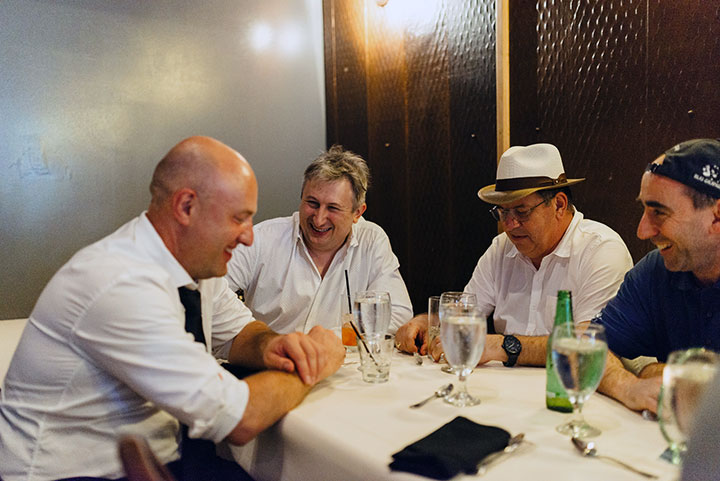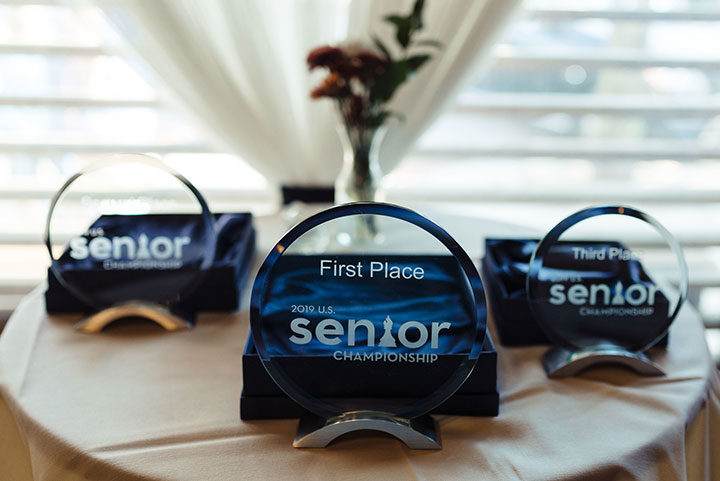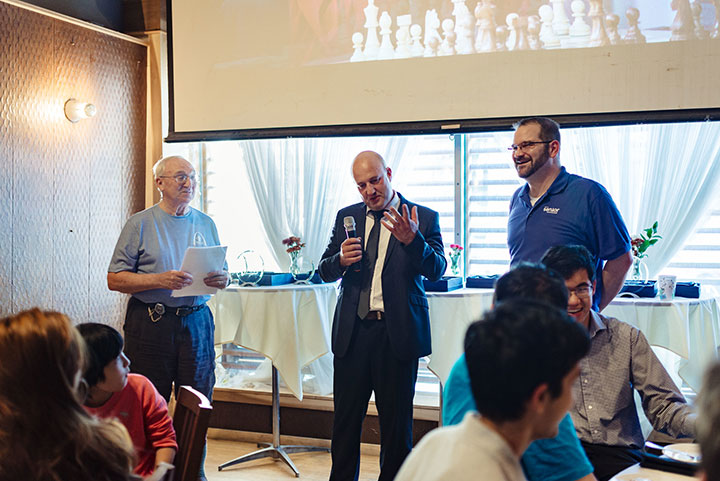Shabalov's first Senior title
For years I have been dreaming about a true Senior chess circuit, similar to what they have in golf, tennis and snooker. Chess is, in many ways, similar to the above mentioned disciplines, and it is affected by near the same processes of technological intrusion which favour the young. The same way a modern material tennis racket enables players to hit the ball harder than ever, the computers have revolutionized the game of chess and made the learning curve much steeper. If chess can be mastered by the age of 16, and I'm not necessarily talking genius types here, then where does it leave us, old folk?
My rating is nowhere near it used to be, so no invites; open tournaments I used to play 30 years ago have not seen one extra dime in increased prize fund, while the expenses of attending such events grew three-fold. There isn't one chance left to break even — let alone make any money — as I travel to tournaments, yet the love for the game is forever, and some competitive fire is still smouldering in there.
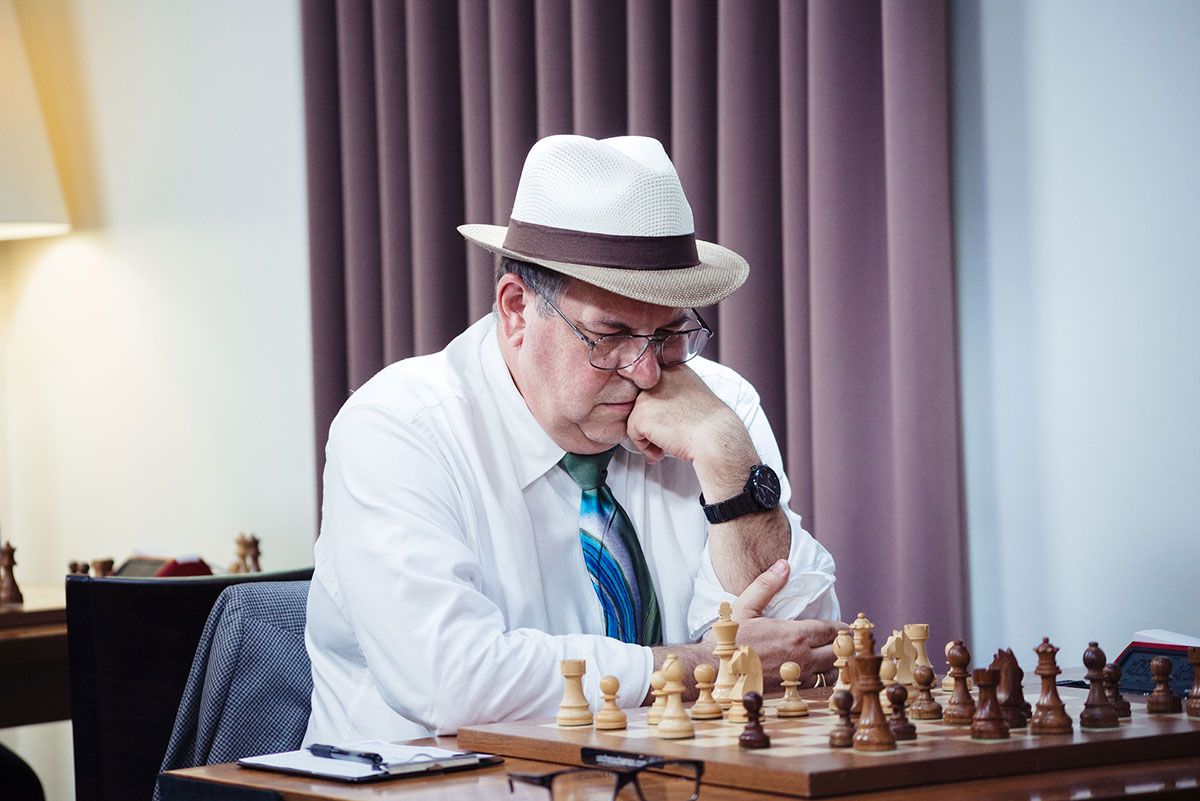
Smouldering at the board | Photo: Crystal Fuller
Those of you who read my reports from the last two World Senior Team Championships (Dresden 2018 and Rhodes 2019) will remember how much I enjoyed my time there, but it was a long wait between those, and the next year's event in Prague is not until March 2020.
The announcement made by St. Louis Chess Club back in April that they will hold an inaugural US Senior Invitational was such welcome news. The prospects of playing in the venue that regularly attracts the very best in the world, alone with having all expenses covered, and a chance to compete for a comprehensive prize fund (total of $50,000) — what more was there to ask for?
Ten players gathered in St. Louis in July to contest the title, but only one of them had to qualify: Alex Fishbein who won the Tournament of State Champions held during the last year's U.S. Open. The rest were chosen by rating, using a formula that combined peak and average USCF and FIDE ratings for the past 12 months with points docked for not reaching the required 30 game activity limit. The author of these words was not on the initial list, and had to wait for Yasser Seirawan and Patrick Wolff to turn down their invites to get in.
The US Senior Team leader, Alexander Shabalov, was a hands-down favourite. It's not only that, at 51, he's the youngest of all of us, Shabba is by far the most physically fit, and he stays active in the tournament scene. One can only guess how many US Senior Championship he's going to win, but he did take his first one here.

Shabalov with trophy, flanked by Rex Sinquefield and Tony Rich | Photo: Crystal Fuller
Alexander's road to victory appears to be smooth, as he ended up as the only player without a loss, but a closer look shows that things weren't always so clear.
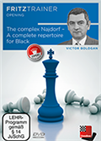 When choosing an opening repertoire, there are days when you want to play for a win with Black, when you want to bear down on your opponent’s position with a potentially crushing attack. The Najdorf is perfect for just such occasions. Strategy, combinations, attack and defence, sacrifices and marvellous manoeuvres — exciting chess is all about the Najdorf!
When choosing an opening repertoire, there are days when you want to play for a win with Black, when you want to bear down on your opponent’s position with a potentially crushing attack. The Najdorf is perfect for just such occasions. Strategy, combinations, attack and defence, sacrifices and marvellous manoeuvres — exciting chess is all about the Najdorf!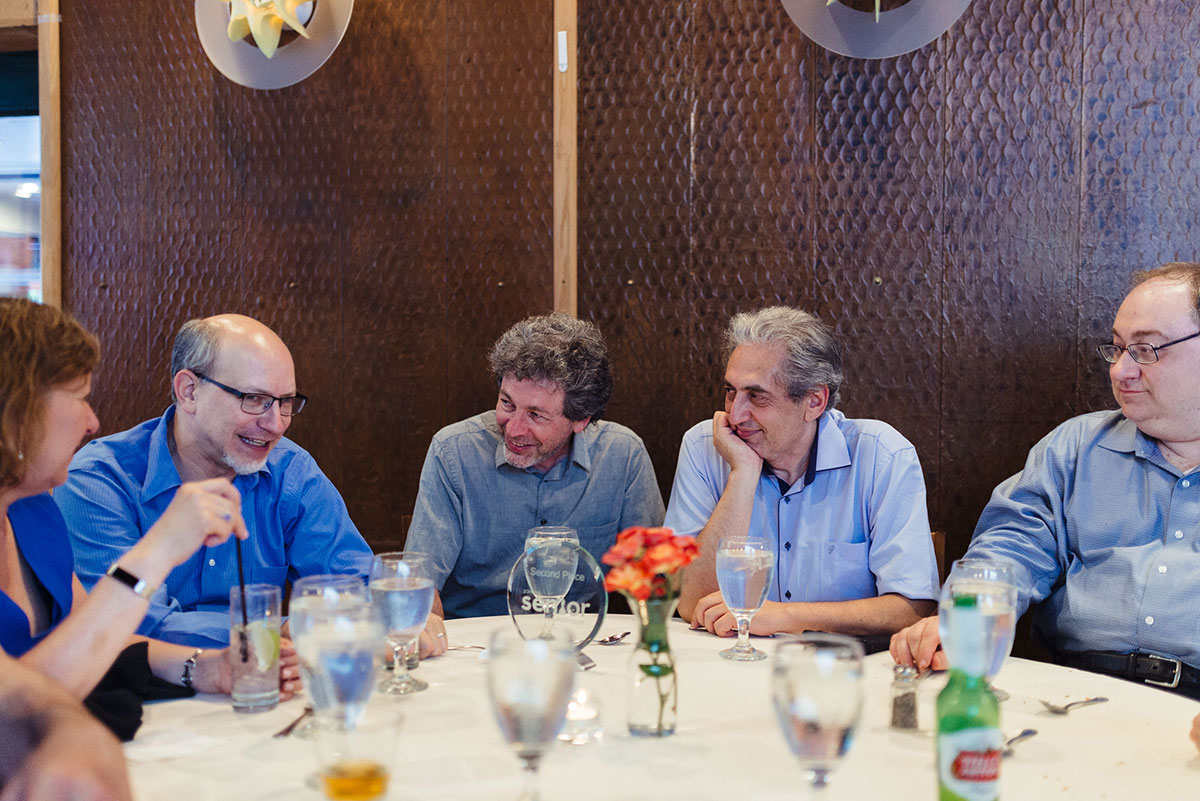
Joel Benjamin, Gregory Kaidanov, Igor Novikov, Alex Fishbein | Photo: Crystal Fuller
After barely escaping what at some moments seemed to be sure losses against Benjamin and Goldin, Shabba never lost the lead, mainly for the reasons that will be described below.
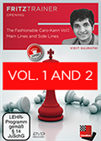 The Caro Kann is a very tricky opening. Black’s play is based on controlling and fighting for key light squares. It is a line which was very fashionable in late 90s and early 2000s due to the successes of greats like Karpov, Anand, Dreev etc. Recently due to strong engines lot of key developments have been made and some new lines have been introduced, while others have been refuted altogether. I have analyzed the new trends carefully and found some new ideas for Black.
The Caro Kann is a very tricky opening. Black’s play is based on controlling and fighting for key light squares. It is a line which was very fashionable in late 90s and early 2000s due to the successes of greats like Karpov, Anand, Dreev etc. Recently due to strong engines lot of key developments have been made and some new lines have been introduced, while others have been refuted altogether. I have analyzed the new trends carefully and found some new ideas for Black.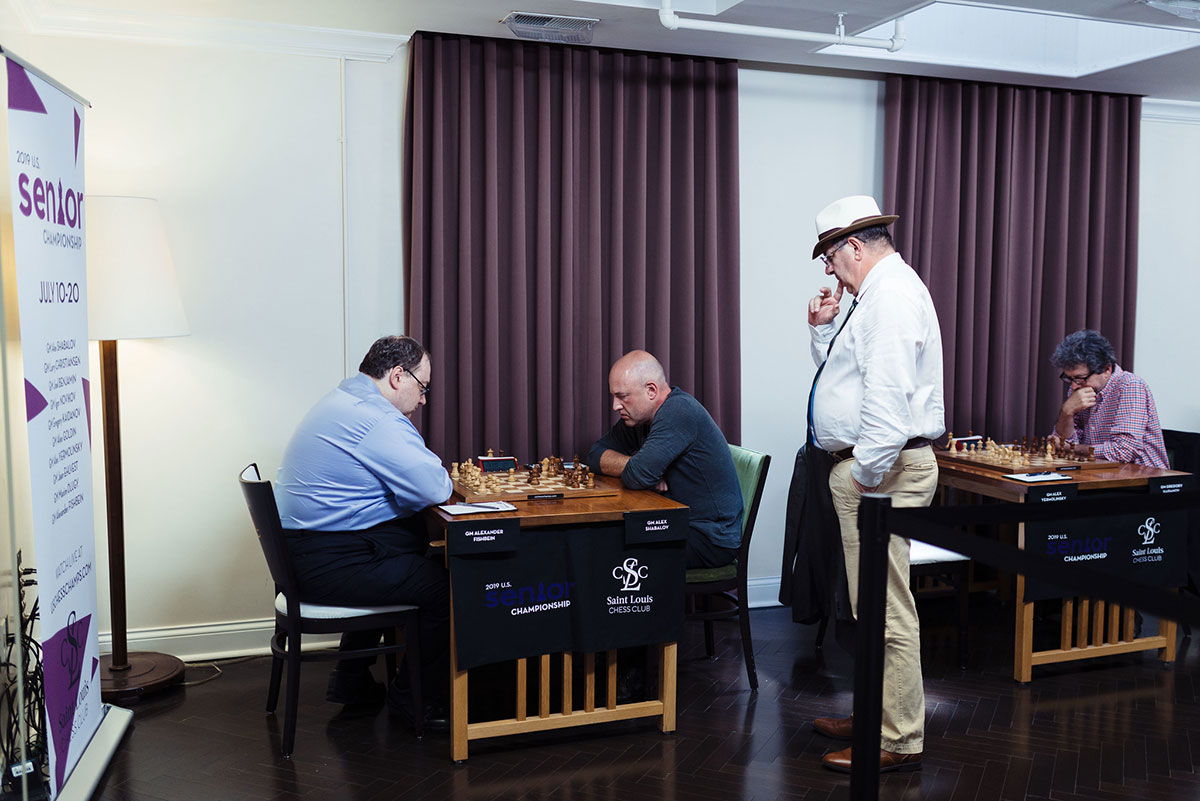
Yermolinsky observes Fishbein vs Shabalov | Photo: Crystal Fuller
In the final standings Shabalov is at only +3, but a full point ahead of Kaidanov and Goldin. The truth is we all kept on beating each other, and nobody was able to pull away from the pack.
Take the following three games that constitute my mini-match against the joint second place finishers.
Lot of excitement, but the outcome would be the same if all three games were drawn. In the final round I “kept pace” by rather unnecessary losing to Max Dlugy, who after a horrendous 1/6 start finished with three straight wins.
Final standings
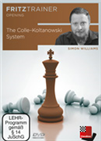 The Colle-Koltanowski system is very easy to learn, yet an extremely dangerous opening.
The Colle-Koltanowski system is very easy to learn, yet an extremely dangerous opening.
No regrets though, as I believe the spectators, aided by expert commentary of Tatev Abrahamyan, Robert Hess and Jesse Kraai, got their money's worth.
The concluding statement is in no way represents the opinions of other participants, but just my own. For one thing, the players could certainly use another rest day, making it more similar to the Dortmund schedule. I could tell many of us were running on fumes. The unexpected results of the last round, when three of the +1 guys, Benjamin, Novikov and myself, all lost their games are evidence of the fatigue factor.
Secondly, the middle-of-summer St. Louis is not my favourite vacation spot. Throughout the ten days we spent there the temperature rarely dropped below 32C, and that is in the shade, with the trademark Missouri humidity. Please, pretty please, move the tournament to January!
Links
